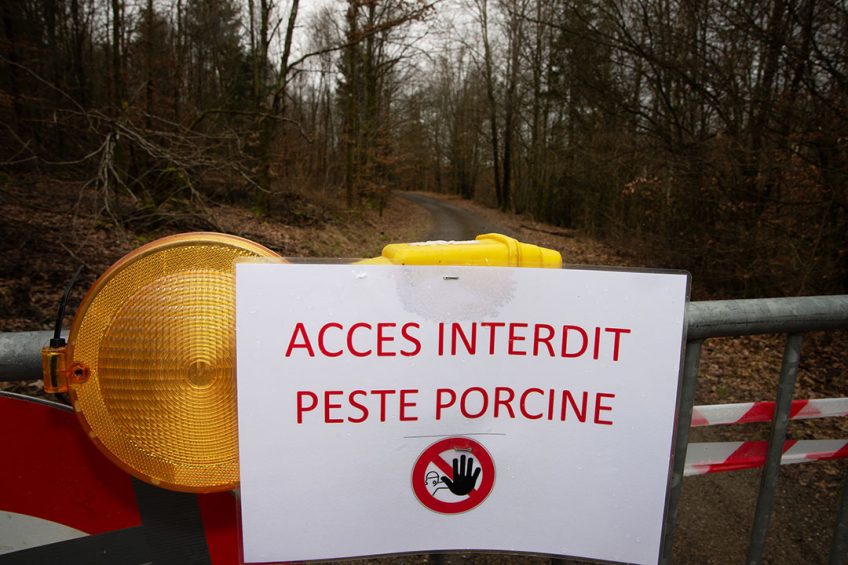ASF Belgium: 708 infected wild boar; paths reopen

The number of wild boar infected with the deadly virus African Swine Fever (ASF) in southern Belgium has grown to 708.
That has become clear from the latest data released by the World Organisation for Animal Health (OIE). In total, last week 40 new cases were reported from the forests in the southern province Luxembourg. Most carcasses were found in the centre of the infected zone, with a few on the northern side and another 5 in the community Aubange, in the extreme south east corner of Belgium, close to the border with both France and the country Luxembourg.
Analysing the cases it becomes clear that in March the number of discovered infected carcasses is considerably lower than in February. In February in total 217 infected wild boar were found, in March however there were only 83.
Hikers can enter the infected woods again
That doesn’t mean that the virus is gone. Nevertheless, hikers have been given permission to re-enter the infected area again as from April 6, which is the 1st day of Easter Holiday. This will be allowed on the condition that the walkers will stick to the paths. That was announced publicly by René Collin, the Walloon minister of agriculture at TVLux, the television station for Belgium’s Luxembourg province.
The controversial decision led to a variety of reactions. Happy faces could be found in the tourism sector, but industries depending on forestry reacted with less understanding, as for months they have been told not to enter the forest because there was still ASF in the area.
Luxembourg building fence against wild boar
The country Luxembourg, immediately adjacent to the Belgian province having the same name, is planning to build a fence at the border with Belgium, to avoid the entrance of ASF. This was reported by the Luxembourg Times. The fence will be 8 km long and will be placed south of Steinfort, near the villages of Sterpenich and Clemency. The country so far has tested 131 carcasses, but all animals were negative for ASF. France has already commenced constructing a fence on its border with Belgium. The Luxembourg government is studying whether it should install a ‘white zone’ to be able to do a targeted cull of wild boar.
ASF in Poland and Romania
Poland and Romania also continued to report outbreaks of African Swine Fever amongst their wild boar population. In recent reports to the OIE the virus was confirmed in wild boar in the east of Poland, where the virus is known to be active. The same goes for Romania, where the virus is very present both in the north east as well as in the south west of the country. Two of the reported outbreaks in Romania occurred at small backyard farms, involving 17 and 2 animals respectively.

Read more about pig health in the Pig Progress Health Tool











